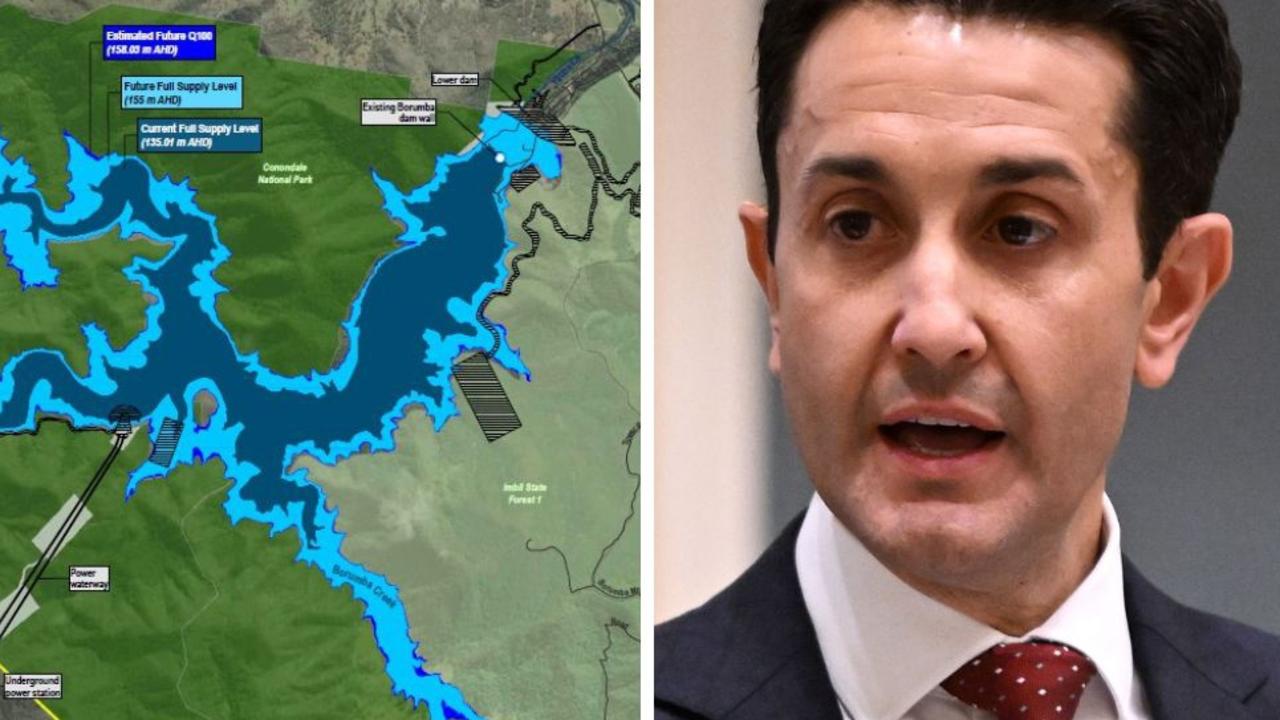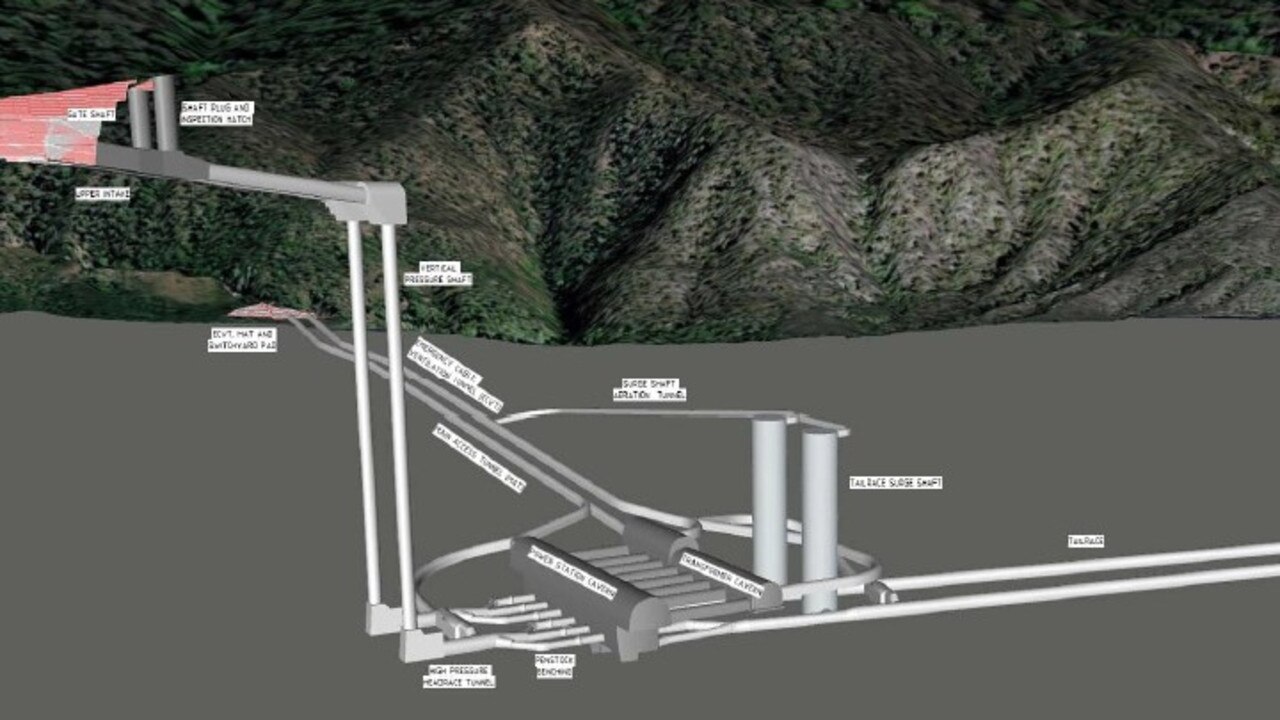Qld LNP stops short of support for Borumba Dam pumped hydro plan
The state’s LNP opposition has stopped short of following in its federal namesake’s footsteps when it comes to controversial plans to build a pumped hydro plant at Borumba Dam, but the linchpin project is far from a safe bet.

The state LNP opposition has stopped short of following in its federal namesake’s footsteps and rejecting plans to build a $14 billion pumped hydro plant at Borumba Dam, but the project’s fate is far from certain.
LNP opposition leader David Crisafulli has declined to outright support the planned renewable plant, proposed to be built in the Mary Valley about 40km south of Gympie, but in his budget reply speech declared the controversial project would be put under the microscope.
Mr Crisafulli pointed to the Borumba project, saying “no special treatment” will be given to any planning and environmental approvals.
“That process will start with a thorough examination of the costings and planning for the government’s pumped-hydro project at Borumba during Estimates,” Mr Crisafulli said.
Estimates start the week of July 23.

Mr Crisafulli’s comments come several days after federal Nationals leader David Littleproud announced the coalition would refuse to provide any funding for the project should it win government at the 2025 election.
Mr Littleproud revealed the coalition’s stance Monday at a community forum with residents of the Gympie region who are fighting against large-scale renewable projects amid concerns about their long-term impact on the region.
The fight escalated in 2022 after it was revealed high-voltage transmission lines would need to be run from the dam to an electrical substation at Woolooga, about 50km northeast of the dam.

The intended route for the lines will run them through Kilkivan, prompting an outcry from residents who have since locked their gates to the state government-owned Powerlink and rallied to fight it.
Other large-scale renewable energy projects proposed for the region are under fire too, including a proposed $2 billion wind farm at the Tuan Forest between Gympie and Maryborough which will also require high voltage lines to connect to Woolooga.
Gympie MP Tony Perrett did not directly respond to questions on Wednesday as to whether he supported the Borumba plan, but said concerns about its impacts extended well beyond the halls of the LNP at regional communities.

“The proposed Borumba pumped hydro project still must pass major assessments before it even puts electricity into the grid,” Mr Perrett said.
“The Budget papers admitted as much.
“It hasn’t received federal government environmental approvals, it still hasn’t received environmental approvals from the Office of the Co-Ordinator General, and the government refuses to release the business case for the project.
“The environmental approvals have been outstanding since June last year when the federal Environment Minister requested a more detailed report into the project.”.
The project itself is a linchpin to governments’ plans to transition to clean energy and reach net zero carbon emission by 2050.
An Initial Advice Statement on the project published in 2023 says the Mary Valley site dam was “unique” and “no alternative site has been identified in Southeast Queensland capable of providing the necessary strategic storage reserves required to provide secure and reliable energy”.

“Delivery of the project is a key enabler of the Queensland government meeting its renewable energy targets,” the report said.
The report says pumped hydro was the “best technology” to provide the long-duration storage required to transition from coal power to renewables.
It was necessary for work to start “early enough so (the) projects can be operational when coal plants are retired” and “battery technology and costs are not forecast to be able to economically provide the system reliability outcomes that can be provided by (pumped hydro)”.
Borumba was crucial to meeting the state’s goals by providing reliability “to otherwise variable energy generation via solar and wind”.
The dam itself will need upgrades by 2035 regardless, to comply with national requirements for large dams.
“Should the project not proceed, equivalent storage assets would need to be developed elsewhere to support the Queensland
Energy and Jobs Plan, at a significant additional cost (financial, environmental, and social),” the report says.
These alternatives would be more expensive, or carry a higher environmental and social cost.
The dam has been mooted as a possible future home for pumped hydro since the 1980s.





